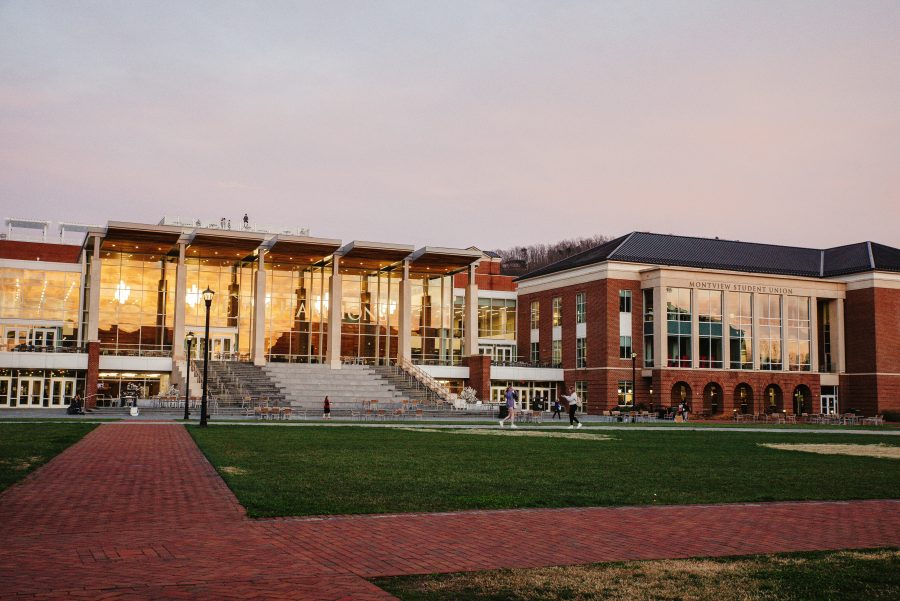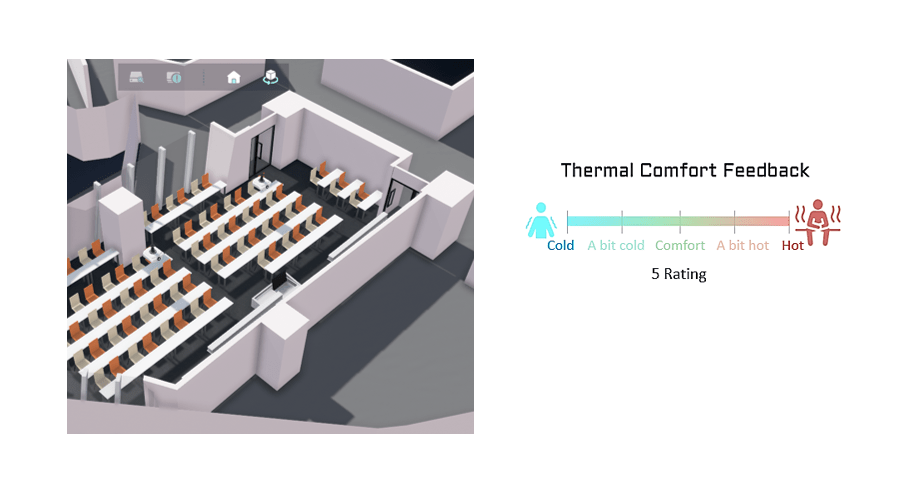Universities and campuses are increasingly expected to be more than just places of learning. They must act as sustainable communities, technologically advanced environments, and models of operational efficiency. Yet behind the scenes, managing sprawling facilities — from classrooms and libraries to sports arenas and offices — presents enormous complexity.
Traditional building management systems (BMS) are siloed and reactive. They track energy use or air quality in isolated systems, but they rarely connect the dots across an entire campus. That’s where digital twins come in.
A digital twin for universities and campuses is a virtual model that integrates real-time data from IoT sensors, building systems, and AI analytics. With Neuron’s Building Digital Twin, university facility management teams can visualise performance across their entire estate, optimise operations, and deliver smarter, more sustainable experiences for students, staff, and visitors.
For a full overview of digital twin capabilities, see our Digital Twin & IoT Hub Overview.
Why Universities and Campuses Need Digital Twins
Unlike a single office tower or retail mall, campuses are multi-use ecosystems. They include lecture halls, research labs, dormitories, cafeterias, and sports facilities — each with unique energy profiles and usage patterns. Without an integrated platform, administrators face:
Inefficient space utilisation – classrooms and lecture theatres often sit empty while others are overcrowded.
Escalating energy costs – HVAC and lighting operate without reflecting real-time occupancy.
Sustainability pressure – universities need to track and report carbon emissions to meet ESG commitments.
Complex operations – facilities teams juggle with upkeeping records of thousands of assets across multiple buildings.
A digital twin addresses these challenges by turning fragmented data into a single, actionable platform. It doesn’t just show numbers; it provides a living, visual model of campus performance.

Case Study: Smart Classrooms at a University in Hong Kong
A leading university in Hong Kong partnered with Neuron to digitise its classrooms as part of a campus-wide modernisation initiative. The goal was to improve space utilisation, reduce energy waste, and lay the foundation for future smart campus integration.
Neuron designed and deployed a Smart Classroom Solution, with features including:
-
Real-time occupancy detection at both seat and room level using ceiling-mounted or wireless sensors.
-
Thermal preference feedback portal is designed and delivered to ensure student and staff comfort by scanning QR codes at seats and providing feedback preferences directly via mobile.
-
Modular architecture for future integration with other smart campus systems.
-
Central dashboards where occupancy data is visualised for facilities management and analytics.
-
Open API support connections with BMS, scheduling tools, and mobile applications.
By linking classroom usage patterns and users preferences directly to energy management, the project created a practical step towards a smarter, more sustainable campus. It also provided the university with transparent data for planning — from optimising timetables to reducing wasted energy in unused spaces.

A Sports Institute in Hong Kong
Universities aren’t the only academic institutions benefiting from digital twins. A major sports institute in Hong Kong collaborated with Neuron to deploy a campus-wide digitalisation platform for its facilities.
This project focused on:
Large-scale device integration (>500 IoT sensors and >300 BMS devices) for unified monitoring and control.
Advanced analytics & visualization: custom Building Insight for performance metrics; 3D digital twin synchronized with live data for immersive scenario modelling; BIM + Asset Management, enabling lifecycle tracking and spatial coordination.
Proactive operations: AI-driven fault detection and operational suggestions to optimise building performance.
Asset & workflow automation: RFID-based asset management and work order system with mobile support for field staff.
The institute gained a single platform for Facility Management (FM), Building Insights and Work Orders Handling, proving that digital twins are just as relevant to sports and research campuses as they are to academic universities.
The Benefits of Neuron’s Digital Twin for Campuses
By adopting Neuron’s Building Digital Twin, universities and institutes can unlock benefits that reach beyond efficiency alone:
Smarter space utilisation – match class schedules to real-time occupancy data.
Energy savings – optimise HVAC and lighting usage across dormitories, classrooms, and labs.
Predictive maintenance – reduce equipment downtime and extend asset lifecycles.
Sustainability compliance – automate carbon tracking and ESG reporting.
Improved student experience – fresher classrooms, comfortable learning environments, and healthier indoor air.
Scalability – start with a single building or pilot programme, then scale to the entire campus.
From Classrooms to Campuses: Building the Future of Education
The case studies from Hong Kong illustrate a broader trend: digital twins are not just for commercial real estate or government projects. They are becoming core tools for higher education and research institutes.
At a Hong Kong university, smart classrooms enabled precise occupancy tracking and smarter energy allocation while ensuring user comfort.
At a Hong Kong sports institute, digital twins optimised complex athletic facilities and strengthened management efficiency.
Together, these examples show how Neuron helps institutions modernise, scale, and align with both operational and environmental goals.
Why Neuron is a Trusted Partner for Campus Digitalisation
Universities and institutes need more than technology — they need a trusted partner that understands the complexity of multi-use campuses. With Neuron, clients gain:
Proven experience delivering digital twin projects for universities, government, and commercial complexes.
Scalable architecture that grows from a single classroom to entire campuses.
AI-driven insights that future-proof facilities against rising energy and sustainability demands.
As with Neuron’s work in hospitality and public infrastructure, the principle remains constant: digital twins transform complexity into clarity, making Neuron a partner of choice for city-scale and campus-scale digitalisation.
Frequently Asked Questions
What is a digital twin for universities?
A digital twin is a virtual model of a university campus that integrates real-time data from sensors, building systems, and AI analytics. Neuron’s platform provides live dashboards, predictive maintenance, and occupancy insights to optimise operations.
How does a digital twin help improve classroom efficiency?
By using different kinds of IoT sensors, universities can monitor how classrooms are actually used, adjust timetables, and reduce energy waste from unused spaces.
Can digital twins be applied to sports and research campuses?
Yes. A major sports institute in Hong Kong used Neuron’s digital twin to optimise training facilities, manage energy, and enhance scheduling efficiency.
How does a digital twin contribute to sustainability on campus?
Neuron’s platform automates carbon tracking, optimises HVAC and other energy-related systems usage, and ensures resources are aligned with actual occupancy — helping universities achieve ESG goals and reduce operational costs.
Is the system scalable?
Absolutely. Neuron’s modular design allows universities to begin with pilot projects like smart classrooms and expand gradually to cover entire campuses.